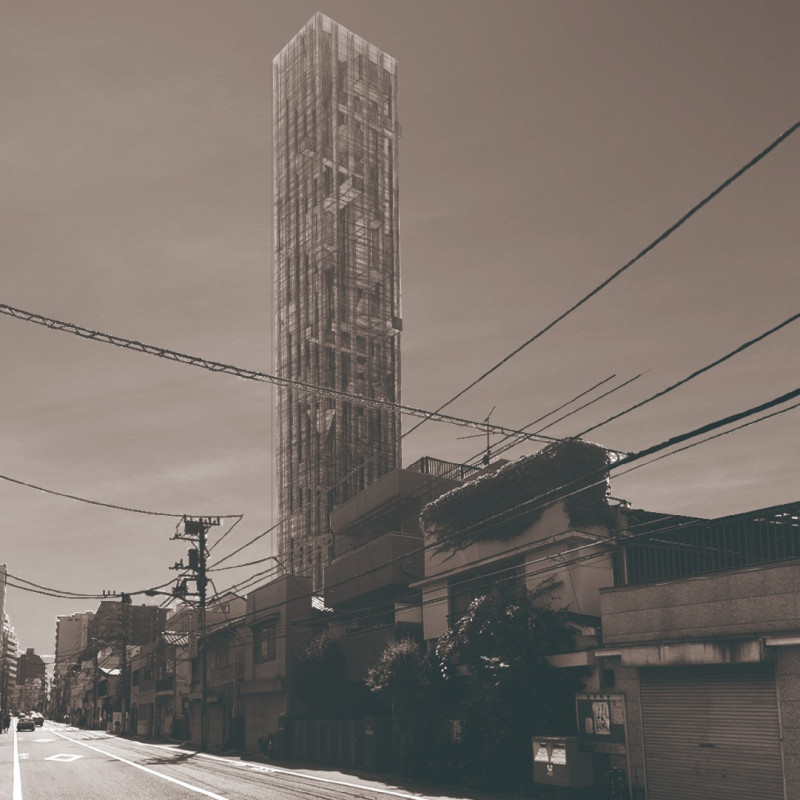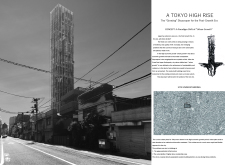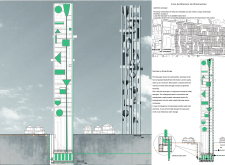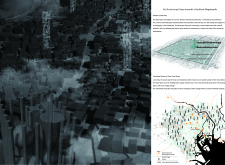5 key facts about this project
The design envisions a skyscraper in the heart of Tokyo, a city grappling with the demands of modern life. As Japan moves into a Post Growth Era, the building aims to redefine urban spaces by focusing on sustainability and resilience. The overall concept revolves around creating an architectural ecosystem. It integrates innovative systems for energy and water management, which work together with the existing urban environment.
Conceptual Framework
The project seeks to challenge the traditional idea of urban growth, which often prioritizes economic expansion. Many past urban plans no longer serve the needs of the population. By recognizing the issues related to aging infrastructure and high-density living, the design provides a thoughtful response that emphasizes urban resilience. This approach fosters a new understanding of how communities can thrive in a changing context.
Functional Design Elements
Central to the design is a pumped hydroelectric energy system. This allows the skyscraper to act as both a hub for energy storage and a solution for water management. By utilizing the underground water supply, the structure ensures a steady flow of vital resources, particularly useful during emergencies. The integration of these systems shows a commitment to not only providing space for living and working but also enhancing the community's overall resilience.
Community Integration
Adaptability is a key focus of the design. The approach encourages the skyscraper to blend into the existing urban landscape rather than dominate it. By promoting a three-dimensional capacity, the building can adjust to meet the evolving needs of its surroundings. Maintaining the character of nearby structures is important for creating a sense of place. This strategy also improves disaster readiness, ensuring the community remains functional in challenging times.
Sustainable Urban Infrastructure
By rethinking the traditional centralized power system, the design aims to turn the city's existing water supply network into a localized clean energy grid. This transformation reduces reliance on external energy sources, fostering a stronger relationship between the building and its community. The proposal highlights the importance of managing resources in a way that benefits the environment.
The design ultimately reflects a thoughtful and adaptive approach to urban living, contributing positively to Tokyo's complex landscape while enhancing the quality of life for its residents.






















































